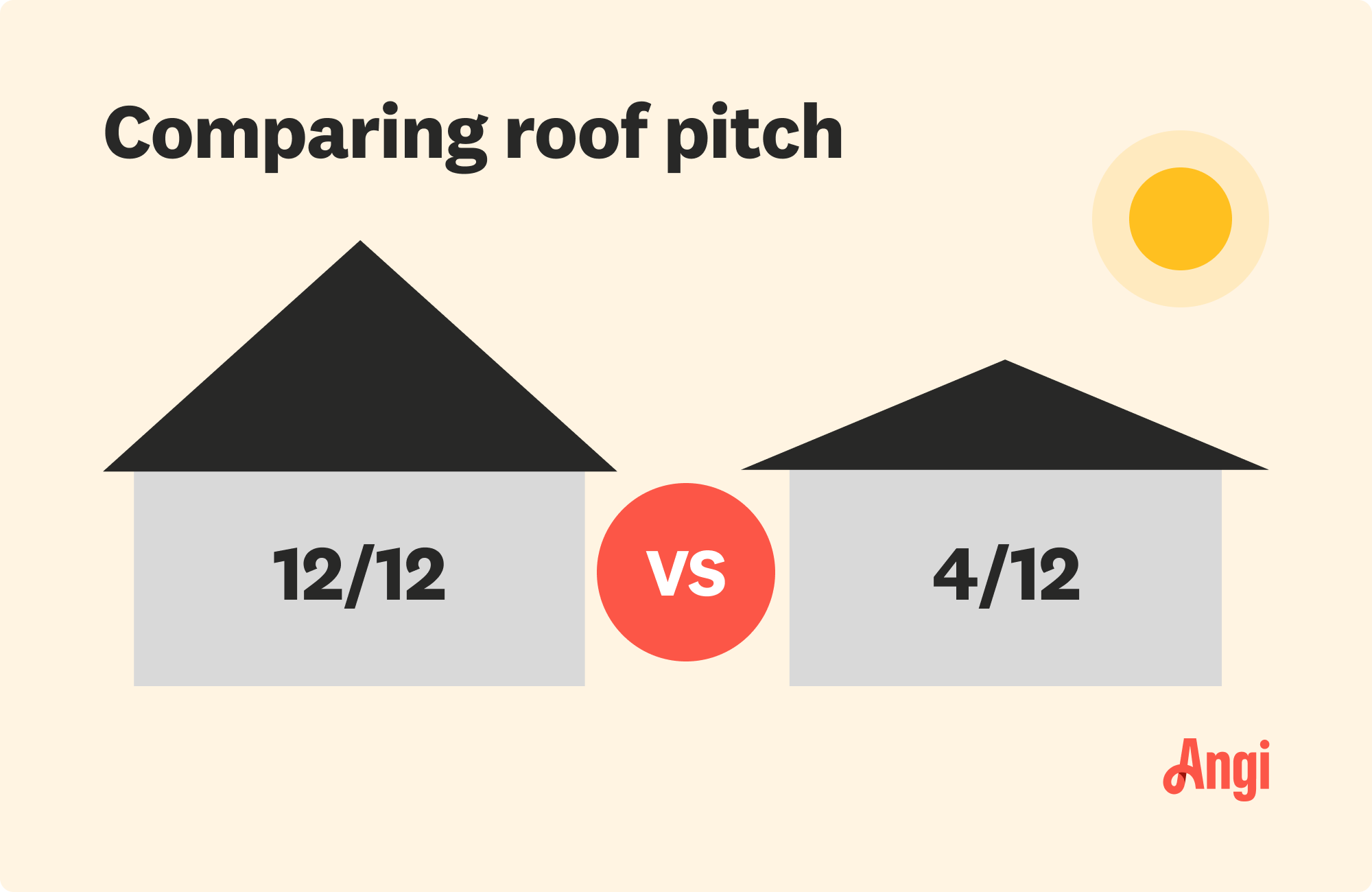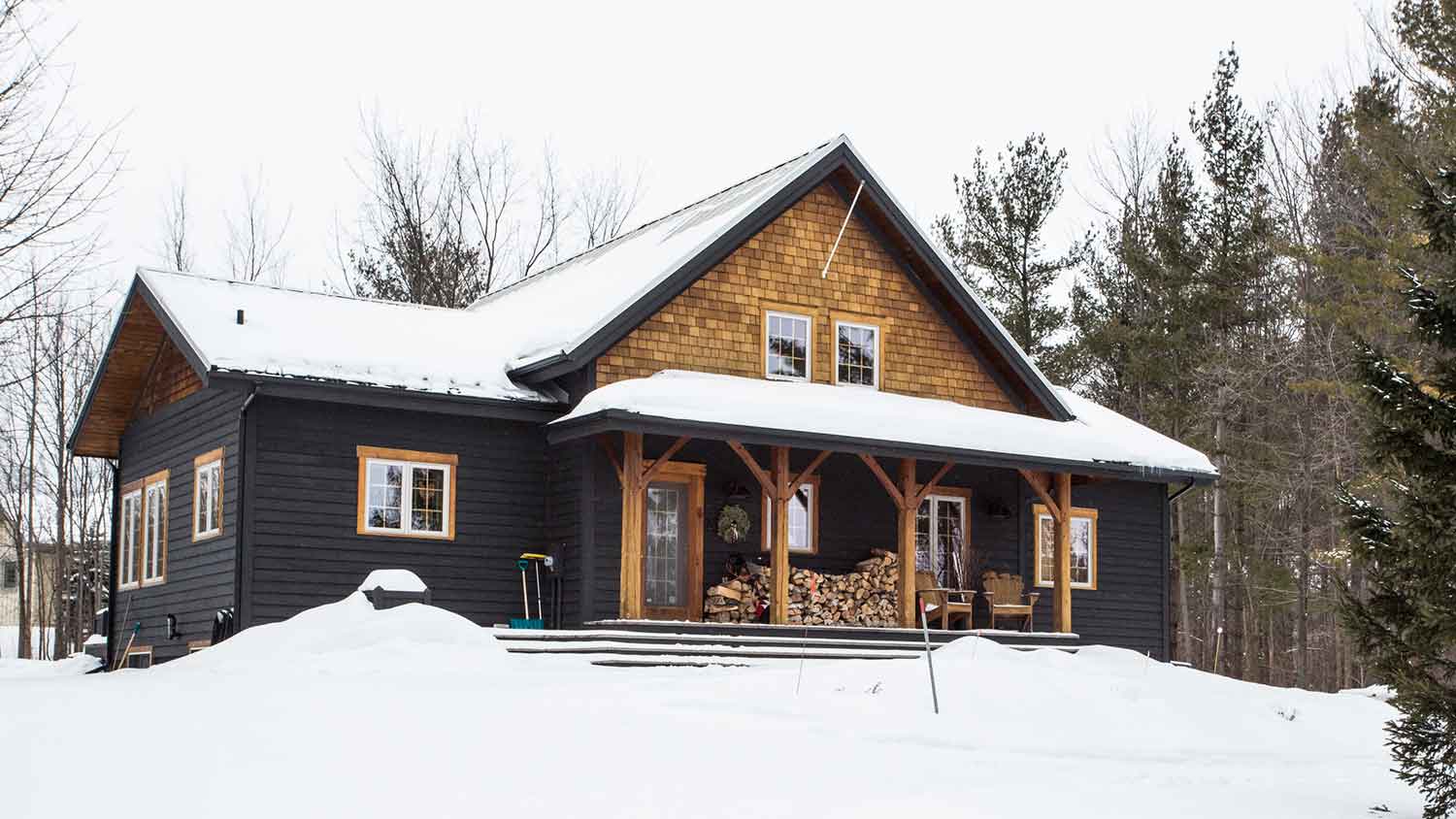
The cost of replacing a flat roof is much lower than an angled one. Learn about the factors that can affect flat roof replacement costs and ways to save on a quality replacement.
Here's the wind-up, and here's the pitch


Your roof pitch affects more than just your home’s appearance.
From flat to steep, the pitch determines the ideal roofing materials.
The perfect roof pitch depends on where you live and your local climate.
When it comes to your home's overall structural integrity, the shape of the roof matters more than you may think. The roof pitch, or incline, determines what materials your roof can—and should—be made from and how it reacts to certain weather conditions. The most common roof pitches range from low to steep. If you're planning on replacing your roof or building from scratch, you need to know which roof pitch will work best.
Time to head back to high school geometry. Your roof's pitch, or incline, measures how many inches the roof rises for every 12 inches of horizontal spread.
Pitch is most often expressed as a fraction or as a ratio. For example, if a roof rises 12 inches for every 12 inches of horizontal spread, it has a roof pitch of 12/12 or 12:12. The closer the roof pitch is to 1 (or 12/12), the steeper it is.
For residential buildings, the common range for roof pitch is between 2/12 and 12/12. You're most likely to find roofs with pitches in the middle range, such as 4/12, 6/12, or 8/12. However, if you live in an area that sees a lot of rain or snow, roofs with steeper pitches, such as 12/12, may be common, too.

A steep-slope roof is any roof with a pitch over 9/12. You can't walk on a steep-slope roof and will need the right type of safety equipment and harness to maneuver around it.
Roofs with a steep pitch are ideal for areas that experience a lot of snow or rain throughout the year. The moisture slides off the roof easily, making it less likely to leak.
Conventional slope roofs have pitches from 4/12 to 8/12. Roofs with a 4/12 pitch are often found on single-story ranch homes. Water may not drain as easily from these lower-pitched roofs, making them a good pick for areas that don't see excess snow or rain.
Roofs with a 6/12 or 8/12 pitch are slightly steeper and better able to drain away rain and snow.
Low-slope roofs are any roofs with a pitch under 4/12. While they are often found on commercial buildings, they are occasionally used for residential homes. One benefit of a low-slope roof is that it tends to be more energy efficient than a steep-slope roof. It also costs less to install and maintain.

Your roof's pitch affects your home’s overall appearance, but it's about more than just looks. The pitch also affects the performance of your roof, the materials used, and the overall roof replacement cost.
For example, you can use asphalt shingles on roofs with a pitch of at least 4/12. But asphalt isn't an appropriate choice for low-slope roofs, as the material is absorbent and water doesn't drain away fast enough when the slope is under 4/12.
Built-up roofing or metal is an appropriate material for low-slope roofs. Rubber membrane is also a good choice since it doesn't absorb water.
Weather and climate conditions play a major role in determining a roof's pitch. If you live in an area that sees a lot of snow, the steeper your roof, the easier it is for snow to slide off. This minimizes the weight and pressure on your home. Steep roofs also drain more easily than low-slope roofs.
If you're building a new home from scratch, a local roofing company can recommend the best roof pitch based on your climate and other factors.
If you are going to replace your roof, changing the roof pitch may be possible. However, doing so will most likely add to the cost because it will involve reframing the roof and hiring an architect and structural engineer.
Before you decide to change your roof pitch, make sure it's the right move. For example, you don't want to switch to a roof with a less steep pitch if you live in an area with a lot of snow or rain.
From average costs to expert advice, get all the answers you need to get your job done.

The cost of replacing a flat roof is much lower than an angled one. Learn about the factors that can affect flat roof replacement costs and ways to save on a quality replacement.

Torch down roofing costs are based on roofing materials and labor, among other factors. Read our guide to learn more about the costs of this flat roof material.

Let the light flood into even the gloomiest attics and transform the look of your home. Here's how to calculate the cost of adding a dormer of any style.

If you’re an experienced roofing DIYer and want to tackle learning how to seal a roof, this guide will help you navigate all the different steps.

Roof insulation types include batts, spray foam, rigid foam boards, and fiber cement boards. Keep reading to learn which roof insulation is best for your home.

Roof sheathing is another name for the strong layer of wood boards that are attached to your roof’s framing. Learn how much roof sheathing costs in this guide.